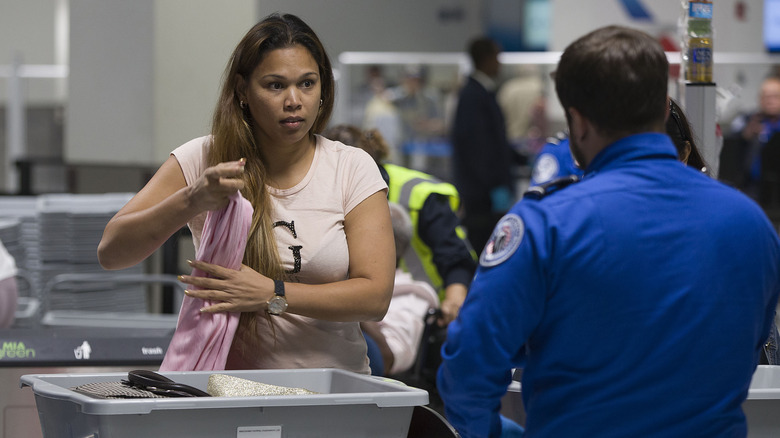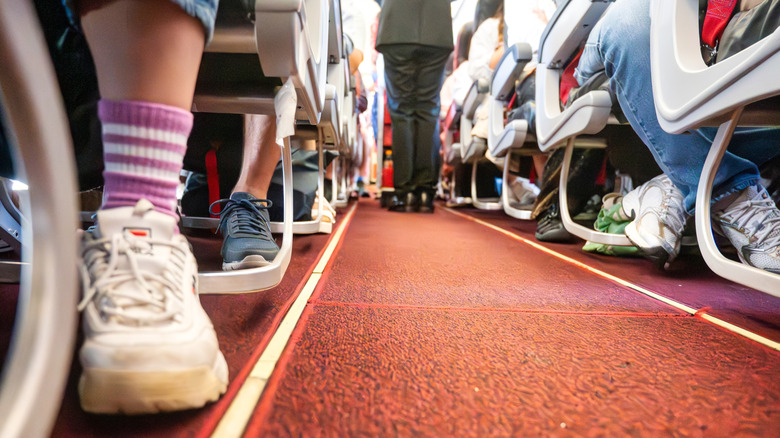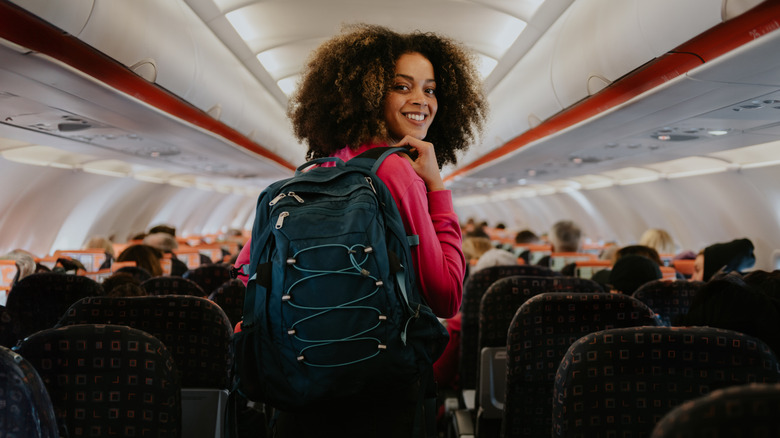The TSA's Shoe Change Rule Will Save You From So Many Germs
If you haven't traveled by airplane in a while, you may have missed that the Department of Homeland Security ended its "shoes off" policy at TSA checkpoints. This change helps speed up those long TSA lines that often get jammed as people fumble with their shoes and stuff them into a luggage tray on the conveyor belt.
In the summer months, you may have opted for sandals or flip-flops to make it easier to go through security, but that means going barefoot through the TSA screening area. It also means people with questionable foot hygiene may have placed their bare feet on the same footprints you're now stepping into.
(Here's why you should never wear open-toed shoes at all during air travel.)
Dr. Jason Singh, Chief Medical Officer of One Oak Medical Group, says TSA's new rules may help protect you from some of these nasty germs. "Walking barefoot or in socks through high-traffic airport areas exposes travelers to fungal pathogens like dermatophytes that cause athlete's foot, bacterial infections including staphylococcus and streptococcus species that can enter through microscopic skin breaks, and potential viral transmission from contaminated surfaces," he said. Now that you no longer have to remove your shoes during air travel, Singh says it's still important to protect your feet.
How to protect your feet during air travel
Singh says germs aren't the only concern when it comes to air travel. "Unprotected feet face injury risks from debris, sharp objects, and rough flooring that can cause lacerations, puncture wounds, or soft tissue trauma, while cold surfaces can impair thermoregulation," he said. "This affects vulnerable populations, including people with diabetes and peripheral neuropathy, those who are immunocompromised, elderly travelers with fragile skin, and pregnant women."
In other words, wearing your favorite flip-flops or any shoe that exposes your feet might not be the best idea while traveling. These shoes may be easy to slip on and off during your flight, but they often lack the support your feet need. Since you'll likely be doing a fair amount of walking through the airport, wearing unsupportive shoes can trigger issues like plantar fasciitis or other foot problems.
It's best to wear comfortable, supportive shoes, such as sneakers with a roomy toe box. Your feet also tend to swell during air travel, so closed-toed shoes can help manage that. While it might be tempting to take your shoes off once you're in the air, those around you might not appreciate the smell. Wearing compression socks is also a smart idea. They help reduce swelling and offer a barrier between your feet and any lingering germs.
How to protect yourself from germs during air travel
Your feet aren't the only part of your body that can be exposed to germs while flying. You're also spending a considerable amount of time in confined spaces where airborne illnesses like the flu, measles, and tuberculosis can spread (here's the best place to sit on a plane). Although cabin air is continuously circulated and filtered during a flight, you can still get sick if someone nearby sneezes or coughs. Turning on the overhead air vent can help keep the air around you moving, which may reduce your risk of exposure. Dry air on planes can also make your nasal passages more vulnerable to respiratory viruses. To keep them from drying out, consider using a saline nasal spray regularly (per AARP).
When it's time for a snack or drink, think about who may have used your tray table before you boarded. Because airlines often face tight turnaround times, flight crews don't always have the chance to wipe down tray tables and armrests between flights (per ABC News). It's a good idea to pack disinfectant wipes in your carry-on and clean those surfaces yourself before using them. It's also smart to wash your hands as often as possible, especially if you tend to touch your eyes, mouth, or nose.


